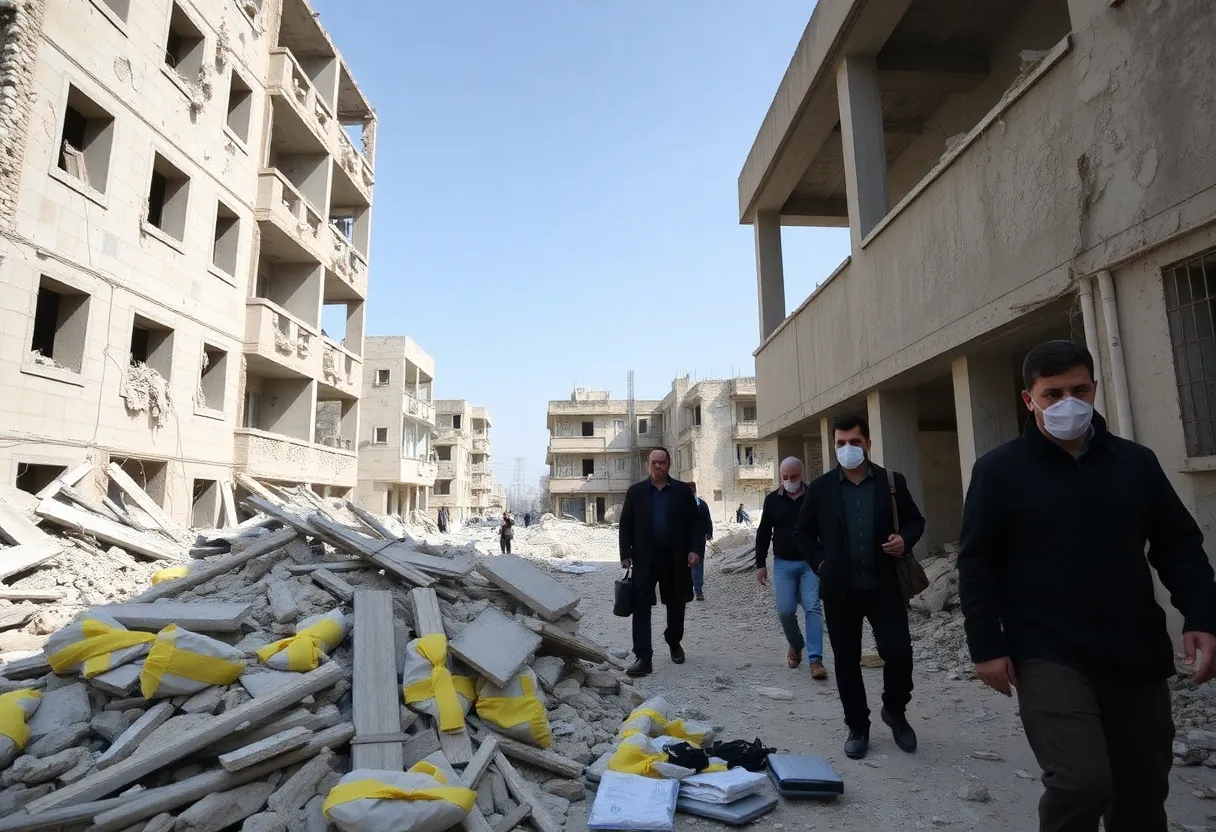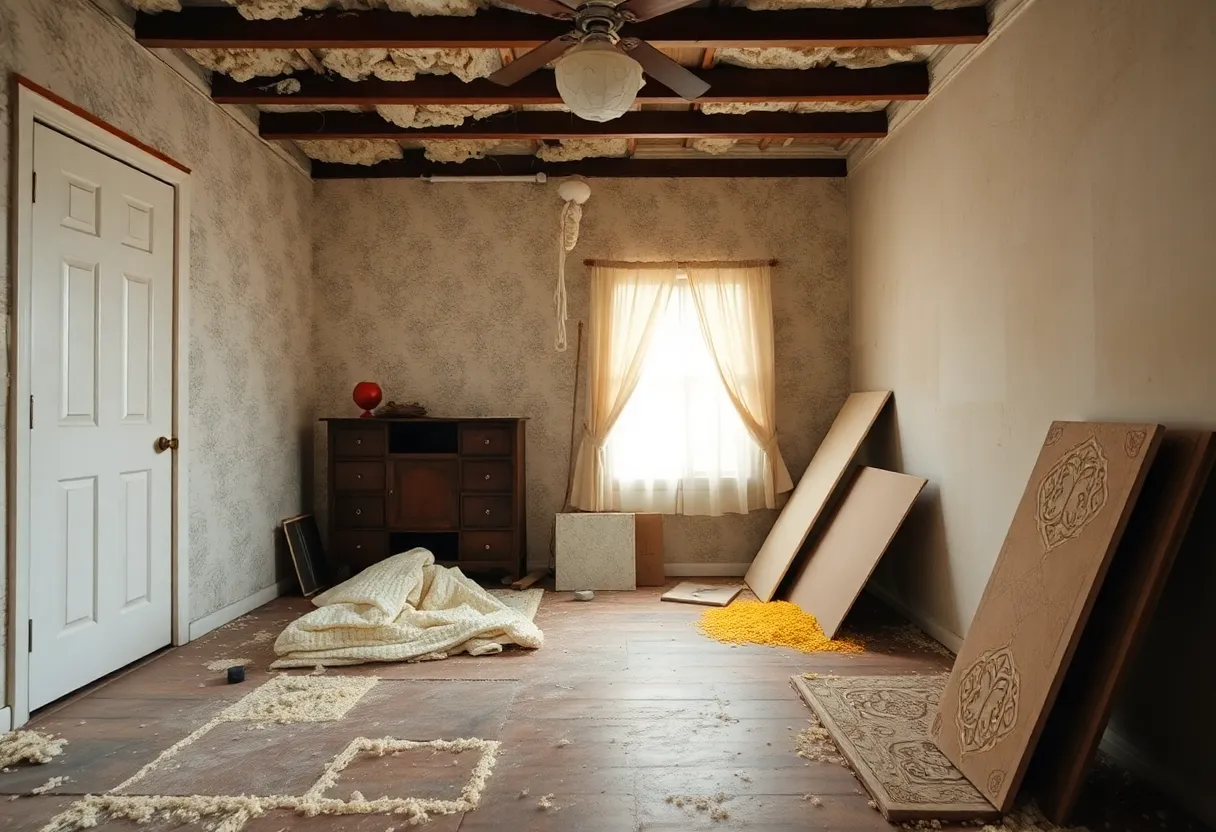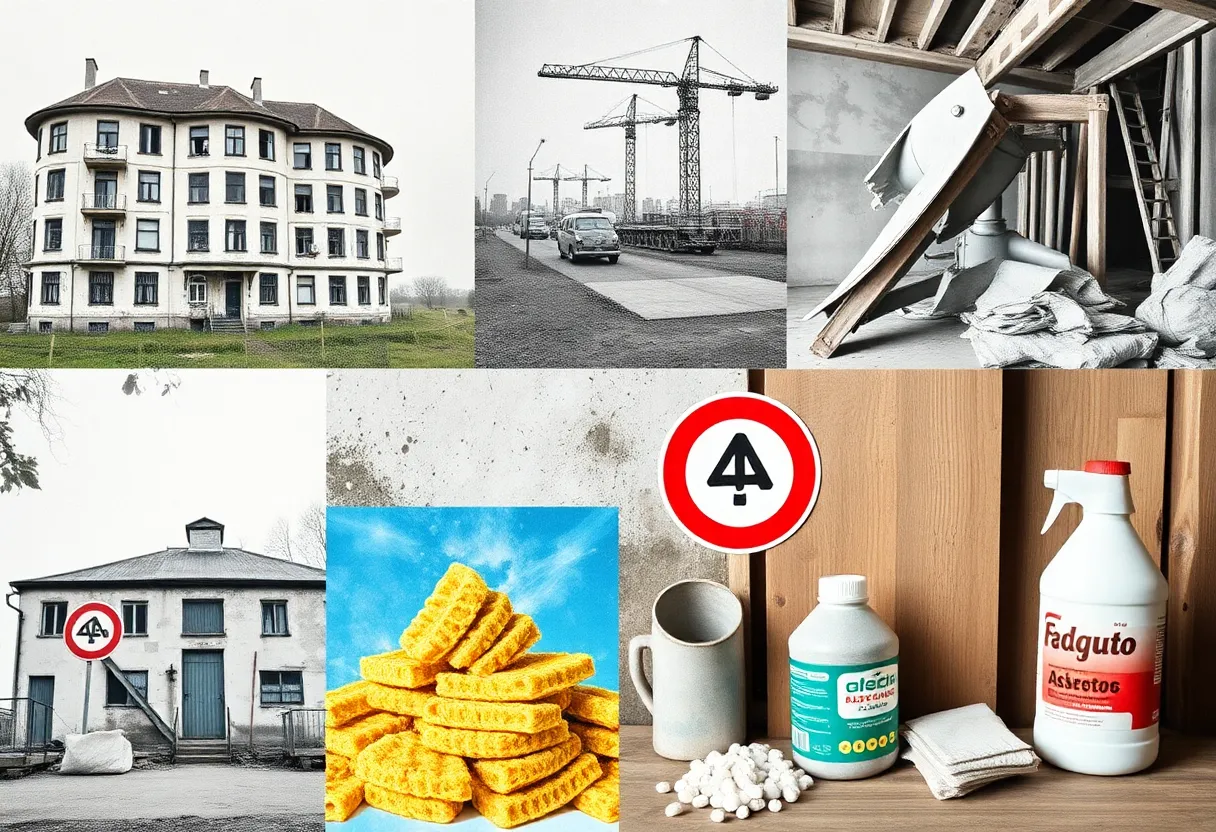News Summary
As conflicts in Gaza continue, asbestos exposure emerges as a significant health threat, with serious implications for the local population.
The Awful Legacy of Asbestos Exposure in Gaza: A Looming Health Crisis
As the conflict in Gaza drags on, another deadly toxin is emerging from the shadows: asbestos. This toxic mineral, infamous for its association with severe health issues, has become an unexpected and tragic byproduct of the ongoing military operations. The disturbing truth is that asbestos fibers are now being released into the air as buildings are damaged, posing immediate and long-term risks to the health of the Palestinian population.
What is Asbestos and Why is it Dangerous?
Asbestos was widely used in construction, especially in roofing materials, where it provided fire resistance and durability. However, when disturbed, these fibers can release toxic particles into the air, making their way into the lungs of unsuspecting individuals. Around the world, researchers confirm that even the smallest inhalation of asbestos fibers can lead to mesothelioma, a rare and aggressive form of lung cancer that typically manifests 20 to 60 years after exposure.
Gaza is densely populated, with approximately 2.1 million people crammed into an area of just 365 square kilometers (141 square miles). Many of the older buildings, which are crumbling under the strain of conflict, contain these dangerous asbestos materials. The United Nations Environment Programme (UNEP) has estimated that as much as 2.3 million tons of rubble in Gaza could be contaminated with asbestos, raising concerns that many residents, particularly children, are breathing in deadly particles.
Health Risks Escalate in Conflict Zones
The situation is alarming; the health repercussions of asbestos exposure can be acute and long-lasting, with children being particularly vulnerable. Despite being banned in many countries, including Israel in 2011, asbestos remains in the infrastructure of Gaza, especially in the eight urban refugee camps established for Palestinians displaced during the 1948-49 Arab-Israeli war. It is a grim irony that while families are trying to escape immediate threats of violence, they are also facing a silent killer in the air they breathe.
Evidence from past conflicts, such as the 2009 operations, indicates that asbestos contamination is not a new issue. A UN survey conducted then found significant levels of asbestos in debris from older structures. In the wake of the recent military campaign, which has resulted in about 15 million tons of rubble, the cleanup effort must be approached with utmost care to prevent further fiber release into the atmosphere.
The Urgent Need for Public Awareness and Action
While many residents in Gaza are acutely aware of the danger posed by violence, the risks associated with asbestos exposure largely remain under the radar. Public health resources are scarce, and awareness about the harmful effects of asbestos is dwindling, leading many to unknowingly inhale dangerous dust laden with these toxic fibers. The longer the debris is left uncleared, the greater the risk of long-term health issues, including asbestosis, lung cancer, and other respiratory diseases.
Public health experts assert that failure to address the environmental impacts of asbestos contamination could lead to health crises surpassing the casualty numbers resulting from military actions. The long-term implications of asbestos exposure in conflict zones like Gaza are drawing comparisons to the aftermath of the 9/11 attacks, where extensive exposure led to severe respiratory issues for first responders.
The Path Forward: Managing the Crisis Effectively
Managing the cleanup of Gaza’s rubble is no small feat, with costs estimated to reach up to $1.2 billion and potentially taking 21 years to complete. The World Health Organization (WHO) has flagged this issue as a potential health disaster in the making, underscoring the immediate need for strategic planning and execution of debris management.
As the dust settles and the world turns its attention elsewhere, the ghosts of asbestos linger on beneath the rubble, reminding us of the dire consequences of negligence in conflict zones. The people of Gaza must not only navigate the dangers of military aggression but also the haunting legacy of a toxic environment that threatens to devastate health for generations to come.
Deeper Dive: News & Info About This Topic
HERE Resources
Tenants Take Action: The Fight Against Asbestos Exposure
The Hidden Dangers of Asbestos in Gaza: A Looming Health Crisis
Revolutionary Advances in Mesothelioma Treatment: ASCO Updates Guidelines
Tragic Effects of Asbestos: Appeal for Information Following Death
Major Delay for Mansfield Community Diagnostic Centre
Asbestos Trial Resumes Amid Allegations of Corruption and Fraud
Asbestos Corruption Trial Continues: Former Free State Premier in Hot Water
Tragic Legacy of Asbestos: The Case of Brian Chidley
Prishtina Tackles Asbestos with Ambitious New Project
Tragic Loss: Woman Dies from Mesothelioma Possibly Linked to Asbestos Exposure
Additional Resources
- Al Jazeera: Death Sentence – Asbestos Released by Israel’s Bombs
- Wikipedia: Asbestos
- AOL: The Very, Very Toxic Risk of Asbestos
- Google Search: Asbestos Health Risks
- Scientific American: Israel’s War in Gaza Creating Hidden Health Problems
- Google Scholar: Asbestos Exposure Health Impact
- Al Jazeera: Palestinians in Gaza Face Asbestos Danger
- Encyclopedia Britannica: Asbestos



















